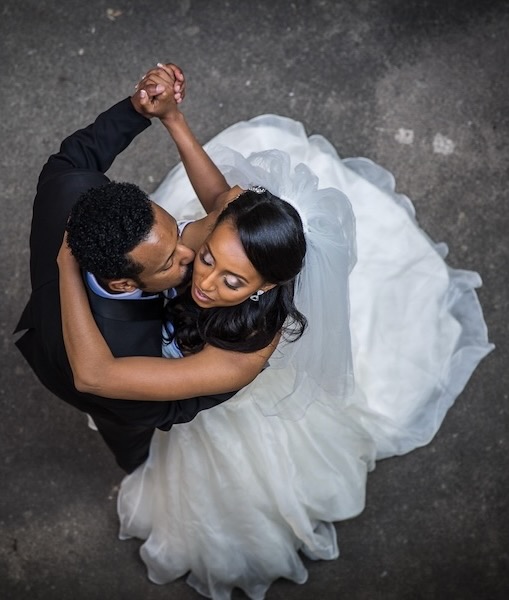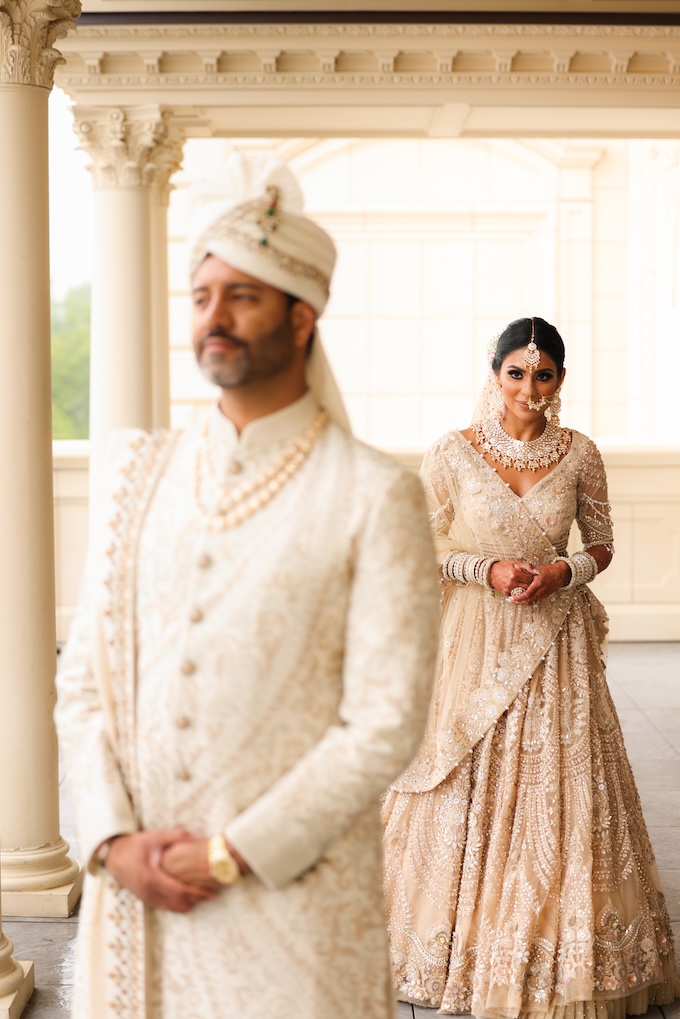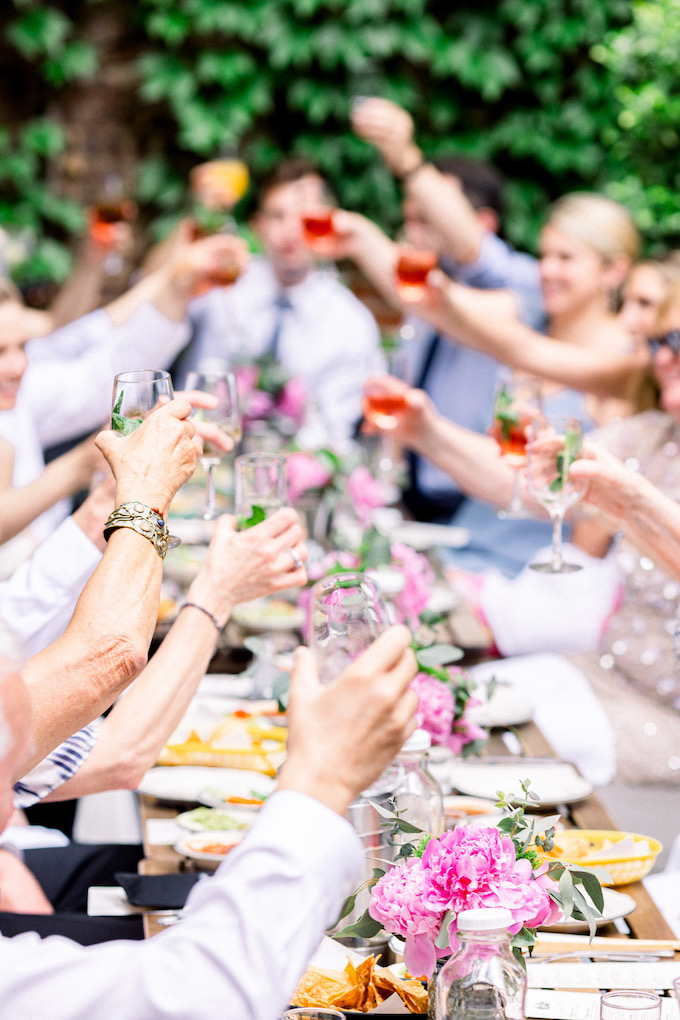Weddings
Filmmakers and photographers who shoot weddings share a lot of common ground, serving the same clients and working in the same rooms. As wedding cinematographer Alex Douglas tells it, they may also lie awake at night pondering some of the same existential questions. “You set your own bar,” Douglas says. “There’s no nine-to-five boss telling you what to do. I feel like a lot of times we’re a little crazy. Like, why do we do this the way we do it? Does it really matter to anyone?” At WPPI this year, Douglas was answered with a resounding yes when he was presented with the Bill Hurter Excellence Award. It was the first time a filmmaker has won the prestigious prize.
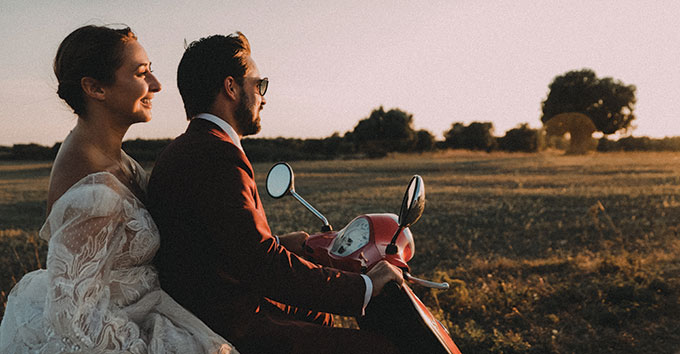
Douglas received this recognition for the 5-minute film La Dolce Vita, which he and his wife, Whitney, produced as the Houston-based filmmaking team Sculpting With Time. A riot of lush scenery, poignant moments and celebratory vitality, the film captures a 2018 wedding in Puglia, Italy. “To see our work and effort acknowledged on that stage at that moment in our lives was a really proud moment for us,” Douglas says. “But that personal achievement was just trumped completely by seeing filmmakers get that level of respect in that community. Just to be seen on an equal playing field really means a lot to me.”
While the award was presented to him alone, Douglas emphasizes that Sculpting With Time is a joint endeavor that he and his wife undertake as “a hundred percent co-collaborators and equals.” In fact, viewers of their work might be surprised to learn that the two of them are the whole operation. Unlike many filmmakers who work with dedicated technicians capturing sound, managing lights and equipment, and running additional cameras, Sculpting With Time keeps it simple. “We prefer to have a very small footprint, and we feel like we’ve developed this synergy over time,” Douglas explains. “We can kind of subliminally communicate or predict what the other person’s needs are, where they are, what kind of coverage they have and be able to anticipate the moment.”
They take a similarly streamlined, travel-ready approach to gear. They both shoot with the Canon EOS-1D X Mark II, usually with a 50mm f/1.2, 24-70mm or 70mm-200mm lens. They use camera-mounted shotgun mics to capture sound and carry a few LEDs that they can set up as needed to light indoor scenes and control them from their phones. A couple of key accessories help them vary the perspectives and styles when they get to the edit; a DJI Mavic 2 drone lets them capture aerials, and Douglas often shoots with a Freefly MōVI M10 gimbal stabilizer that helps him capture smooth slow-motion footage.

If they take a minimalist approach to crew and gear, the duo never skimp on time. They research locations online for destination weddings and then arrive a couple days in advance to shoot b-roll, handle logistics and rest up to make sure they’re in top form for the wedding day. They also stay a day or two after the event to capture more location shots. Aside from practical matters, planning well also paradoxically gives them the confidence they need to be spontaneous. “Something might show up that’s more beautiful than your plan, and you have to be still willing to see with open eyes,” Douglas says. “Because these are real people and real moments, if everything’s too staged then it’s going to show. Your viewer is smarter than you think. They might not know what they’re picking up on, but there’s going to be a lack of authenticity that somehow comes out in the film.”
One of the spontaneous moments they captured for La Dolce Vita became a defining element of the film. The whole wedding party had gathered in a cave for the ceremony, and at the end of it they suddenly started singing “Stand By Me.”
“You have the bride and groom singing, the bridesmaids, the groomsmen, the mother of the bride,” Douglas explains. “Everyone starts belting out this song, and it’s just so free and liberated and this true celebratory moment.” The pair grabbed their cameras off their tripods and started shooting handheld.
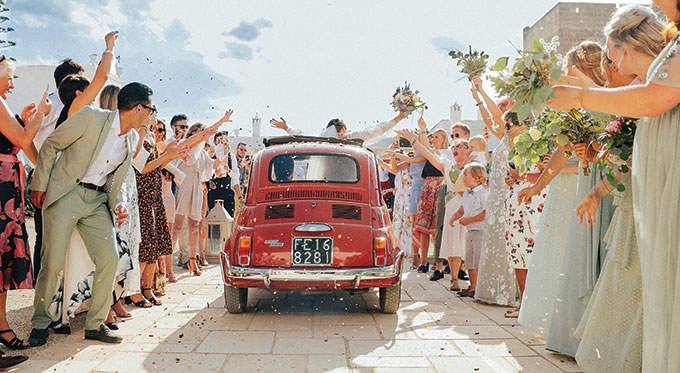
Still, that bit of footage stayed in the can until late in the editing process. Watching a rough cut of La Dolce Vita, Douglas felt like there was something missing. “And then I remembered that moment,” he says. He realized that it encapsulated the whole wedding day and would make the perfect outro for the film.
To give La Dolce Vita its dynamic narrative arc, he structured it into three “acts” that are defined by different speeds, types of footage and music. “The music is what I pick first,” he says. “So I needed to kind of commit to that structure for the edit in the sound design before I actually put down any of my edits.”
The first act picks up on the vintage Italian instruments the wedding band played, in a fast-paced Italian mambo, conveying the thrill of getting married accompanied by fast cuts and a lighthearted feel. Then the second act slows things down with a spare soundtrack behind voice clips from the event, capturing the more solemn themes of the occasion. For the third act, Douglas says, “I wanted to pick up and feel jovial again, but nostalgic, so it’s sort of like a flashback of the whole day.” He achieved that with the scene in the cave, which also adds an element of the unexpected to the film. “Our logo comes up and you think the film’s over, and then it goes into this very real-time moment,” Douglas explains.
That kind of unexpected twist is one of the hallmarks in both the wedding and commercial work that Sculpting With Time produces. “We always want our viewer to be surprised, to feel like they saw something they haven’t seen before, to get carried and swept away in the unpredictability of our films,” Douglas says.
Sculpting With Time works on just a handful of commercial projects each year. Earning their bread and butter from the 10 to 15 weddings they shoot over the same period allows them to be selective about the commercial projects they pursue. While working with commercial clients requires more preproduction planning and responsiveness to each client’s vision for the finished work, Douglas sees those as differences that have helped Sculpting With Time better meet their wedding clients’ needs.
When the bride from La Dolce Vita first came to them about shooting her wedding, she explained that several other filmmakers had already turned her down because her vision for the work didn’t match their style. Sculpting With Time took the job, savoring the challenge to execute their client’s vision, just like on a commercial job. “I feel like in the wedding world, sometimes filmmakers or photographers sort of get boxed into, ‘This is my aesthetic, this is how I do things, and this is how it’s going to be,’” Douglas observes. “I think allowing yourself to adapt your style and really see who the couple is—or in this situation, to see what they wanted as their aesthetic—it challenged me in a different way that forced me to get out of my comfort zone.”
Being ready to rise to the challenge paid off, and it’s a plan Sculpting With Time intends to keep following. “My goal is just that I always want whatever I’m working on to be the best thing I’ve ever created,” Douglas says, “and to just outdo whatever I’ve done before.”
Watch the film: bit.ly/ladolcevitadouglas
Related: Being a One-Person Superstar Film Team at a Wedding
How to Edit Your Wedding Films Like a Pro
8 Easy Ways Photographers Can Create Engaging Video Content


